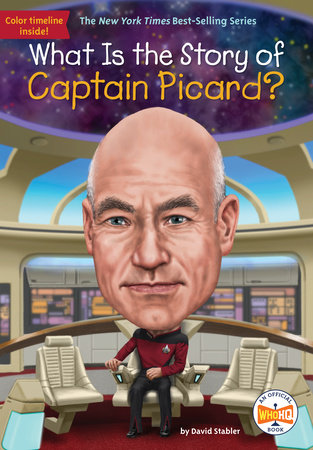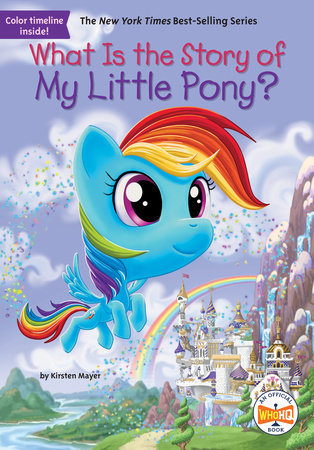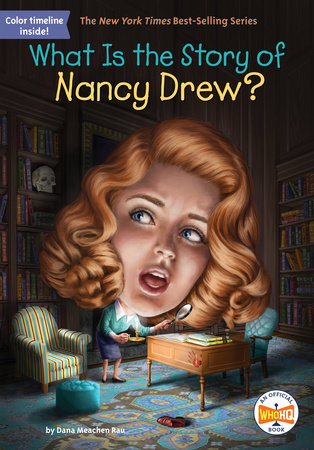Excerpt
What Is the Story of Captain Picard?
What Is the Story of Captain Picard? On the evening of September 28, 1987, Star Trek fans all over the world turned on their TV sets with great anticipation. For the first time in thirteen years, a new episode of their favorite series would be airing. But this time the show would be different. Star Trek: The Next Generation had a new look, a new cast . . . and a new captain in command of the U.S.S. Enterprise--D. Trek fans were about to meet Jean--Luc Picard.
The first episode, “Encounter at Farpoint,” showed the new crew being assembled and sent to solve a mystery at the Farpoint space station. Along the way, they encounter “Q,” an all--powerful alien who takes an intense interest in the ship’s freshly installed commander. By the end of the two--hour premiere episode, Picard would solve the mystery of Farpoint, outwit Q, and earn the respect of his new crew. The Enterprise, it seemed, was in good hands.
In many ways, “Encounter at Farpoint” was a typical Star Trek episode. It featured strange aliens, dangerous situations, and plenty of science fiction intrigue. Captain Picard opened the show with the words “Space, the final frontier . . .” just as the original Enterprise captain, James T. Kirk, had back in the 1960s when the original Star Trek series aired on television. Dr. Leonard McCoy, the ship’s surgeon on that show, even dropped by for a visit. But much had changed as well. There were more women officers on the ship. Many of the crewmembers had family—-including small children—-with them on board. An android, or artificial life form, sat on the bridge in place of the Vulcan science officer Mr. Spock. And Captain Picard relied on his wits more than his fists to solve problems. A bald, businesslike man of French descent, Picard is just as daring as his predecessor but with a more diplomatic flair.
It took a while for some fans to adjust to all these changes. They hoped the old Star Trek would return. But most viewers were willing to give the new show a chance. They trusted the man who created the show, Gene Roddenberry, and they were eager to see where he would take the new crew and its captain. As it turned out, Star Trek: The Next Generation remained on TV for seven years. The new crewmembers became just as beloved as Captain Kirk, Mr. Spock, and Dr. McCoy. Captain Jean--Luc Picard went on to be the most popular of them all. He led his crew through four movies and even got his own spin--off series, Star Trek: Picard, in 2020. But you would have never predicted that on that September evening in 1987 when “Encounter at Farpoint” premiered. This is the story of Captain Picard—-the man who saved Star Trek and became one of its biggest stars.
Chapter 1: The New Captain The final episode of the original Star Trek series aired on the NBC network on June 3, 1969. The cast and crew moved on to other projects. For creator and producer Gene Roddenberry, it was the end of a three--year mission to bring smart science fiction to American television. Everyone thought the show was gone forever. Everyone except the fans, that is.
In the early 1970s, Star Trek fans began to organize themselves. They gathered at Star Trek conventions, which are large meetings where they could celebrate the show, dress up as favorite characters, and buy and sell books, toys, and other merchandise. Reruns of the original seventy--nine episodes on local TV stations began to attract new fans to the show as well. Some of them asked the network to reunite the cast and bring the Enterprise crew back for another season.
Gene Roddenberry started to believe that his Star Trek dream could be revived. In 1973, he persuaded NBC to let him create a new show, Star Trek: The Animated Series. The cartoon version of the Enterprise’s adventures aired for two seasons on Saturday mornings and featured the voices of many members of the original cast. After it went off the air in 1974, Roddenberry set his sights on bringing the crew back for new live--action TV adventures. The executives at Paramount Studios were still not convinced that Star Trek was popular enough, though, and they rejected all of Roddenberry’s ideas. It was only after the phenomenal success of the feature film Star Wars in 1977 that Hollywood began to reconsider.
In 1978, the Paramount movie studio announced that they had hired Gene Roddenberry to create an all--new Star Trek movie featuring the original crew. Star Trek: The Motion Picture was released in December 1979 and became a box office success. Three more Star Trek features followed over the next seven years.
By 1986, Gene Roddenberry was looking for a new challenge. Although he was happy with the movie series’ success, he still longed to see Star Trek back on television where it all began. He liked the idea of starting over with a whole new captain and crew. Television executives agreed that the time was right for the “next generation” to take over. In October of that year, a new weekly Star Trek TV series was announced. It would begin airing in the fall of 1987. Roddenberry now had less than one year to put the show together.
He started by assembling an all--star team of writers and producers to help him bring his vision to life. Over the next few months, they assembled a list of characters for the new series. Topping that list was the Enterprise’s new captain, Jean--Luc Picard. Roddenberry picked that name to honor two Swiss scientists he admired, twin brothers Auguste and Jean Piccard.
Roddenberry modeled Picard after one of his favorite fictional characters, Captain Horatio Hornblower. Hornblower is a nineteenth--century English sea captain in a series of books written by C. S. Forester. He is known for his intelligence but also for being uncomfortable around other people. Roddenberry instructed his writers to keep these traits in mind when writing for the character of Captain Picard. He also told them the next Enterprise commander had to be French.
Many actors auditioned for the part of Jean--Luc Picard. One of them was Patrick Stewart. Although he was a fine performer, he didn’t seem to fit what Roddenberry had in mind. For one thing, he was British, not French. For another, he was as bald as an egg. He had started to lose his hair at age nineteen. Roddenberry immediately crossed Stewart off his list, but encouraged him to try out for another role, the android officer Lieutenant Commander Data. Stewart wasn’t interested in playing a secondary part, however. He wanted to sit in the captain’s chair.
A number of the other producers agreed. They thought Patrick Stewart was the right man for the role. Over the next several weeks, they urged Gene Roddenberry to reconsider. Eventually, he agreed to take another look at the stage actor. The producers called Stewart and asked him to come back for another meeting with Roddenberry and studio executives. They also reminded him that Gene envisioned Picard as having wavy, flowing hair.
Patrick Stewart immediately called home to London and had a special hairpiece shipped over to Hollywood for his audition. He showed up to the meeting wearing a wig! He read a scene as Picard and immediately impressed everyone in the room. Even Gene Roddenberry could see that he was the perfect actor to play Picard. One of the executives then rose from his chair and sealed the deal.
“That’s your guy,” he told Roddenberry. Then he turned to Patrick Stewart. “But lose the wig.”













